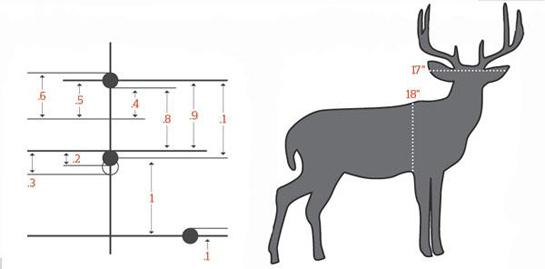We may earn revenue from the products available on this page and participate in affiliate programs. Learn More ›
The “mils” in a mil-dot scope refer to milliradians, which is a measurement of angle. If you picture a mil as an ice cream cone, with the tip originating at the shooter’s eye and an open end that gets ever wider the farther out it goes, you get the idea. So if the mouth of our imaginary cone is 1 mil in diameter, making it 3.6 inches across at 100 yards, it would grow to 36 inches at 1,000 yards.
Learning the principle behind mils (see illustrations), coupled with some homework on your part, can yield remarkable benefits to your shooting.
For instance, mils allow you to hold over (or hold off) a target without the need to adjust your scope turrets for elevation and windage. With a come-up at 375 yards of 15 clicks, for example, you can hold the crosshairs 1.5 mils high on the target for a direct hit.
It takes time, but once you master it, the mil-dot system is lethal and fast.
1 – Measure in Mils
The first step is to learn how to measure objects, like the depth of a deer’s body, down to a tenth of a mil. The figures in the chart show how to bracket an object to get a precise measurement. If we know the size of the object, we can quickly calculate its range using a relatively simple math equation: Size of the target in yards multiplied by 1,000 and divided by its size in mils equals the range in yards.
2 – Range Your Buck
Likewise, if we know that the large-bodied bucks where we hunt are typically 18 inches deep in the chest, we can pre-determine the mil values for different ranges. In this case, at 350 yards those 18 inches would measure 1.4 mils; at 400 yards, 1.25 mils; at 500 yards, 1 mil; and at 600 yards, 0.8 mil. With this knowledge at hand, you can quickly find out if a buck is in range.

